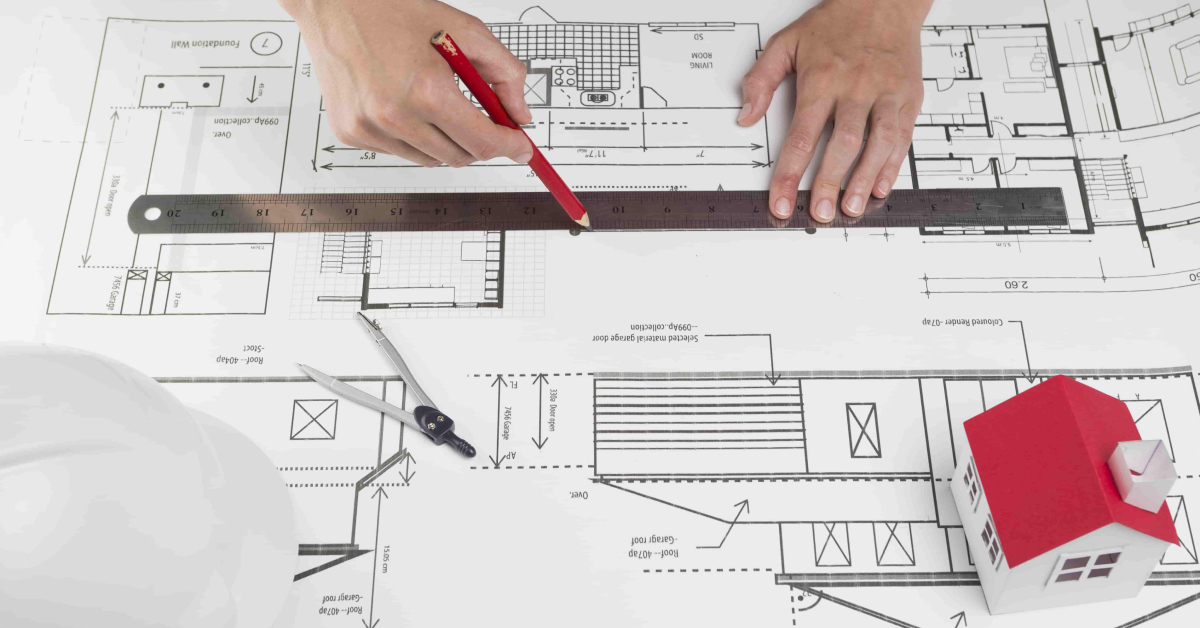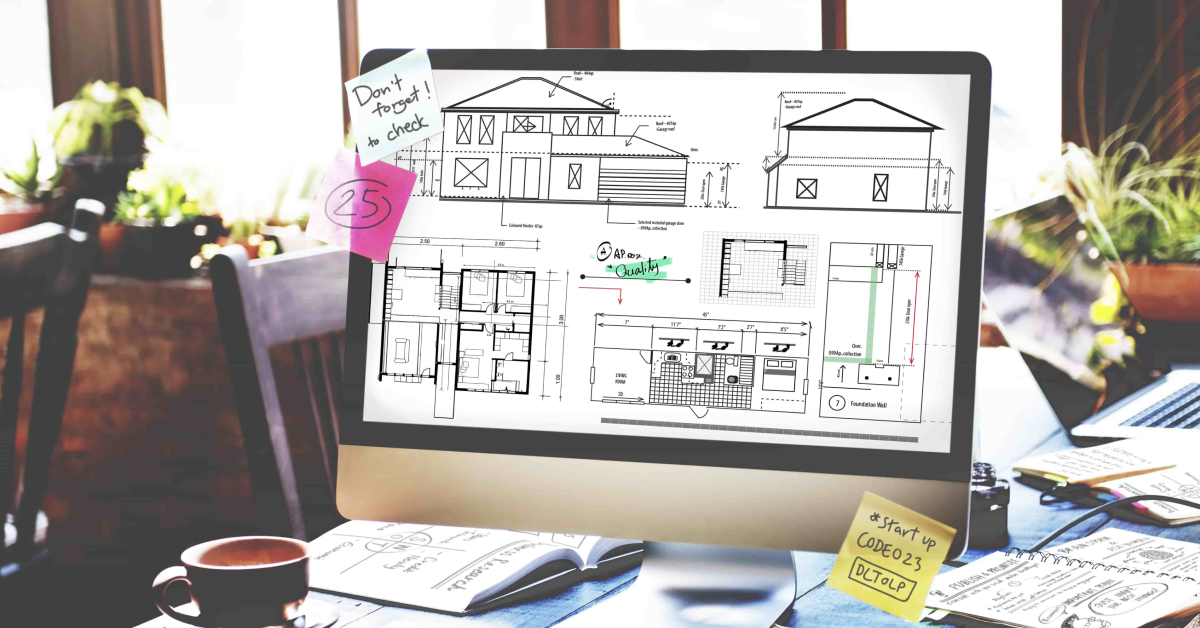Architecture, the art and science of designing and constructing buildings, shapes our environment. At the heart of this discipline lies architectural design, a process beyond mere aesthetics to encompass functionality, sustainability, and social considerations. In this three-part blog series, we will delve into architectural design’s definition,
Exploring key concepts and processes, shedding light on the intricate world of creating spaces that inspire, function, and endure. ODD’s innovative architectural solutions in Islamabad showcase their expertise in blending functionality with aesthetic appeal, setting new standards for urban design. Discover more about their groundbreaking projects at Architects in Islamabad & Rawalpindi.
Defining Architectural Design:
Architectural design is the process of conceptualizing, planning, and creating the built environment. It involves synthesizing artistic vision, technical expertise, and practical considerations to design structures that serve their intended purpose and resonate with their users and surroundings.
Architectural design is a holistic endeavor that considers form, function, context, and sustainability to create visually appealing and operationally efficient spaces. It’s a narrative woven through the fabric of a building, where every element tells a story of culture, history, and purpose. Through meticulous attention to detail and a deep understanding of local context, architects craft spaces that fulfill practical needs and evoke emotions and memories. Explore the art of architectural storytelling and its profound impact on design at Architectural Storytelling: Capturing Culture and History in Design.

Exploring Key Concepts in Architectural Design:
Form and Function in Architectural Design:
One of the fundamental principles of architectural design is the relationship between form and function. The form of a building should not only be aesthetically pleasing but also respond to the functional needs of its users. This principle, famously articulated by architect Louis Sullivan as “form follows function,” underscores the importance of designing beautiful and practical buildings. Successful architectural design achieves a harmonious balance between form and function, creating spaces that are not only visually striking but also highly functional.
Contextual Considerations in Architectural Design:
Architecture is not isolated; it is deeply intertwined with its context and surroundings. Contextual considerations, such as a place’s site, climate, culture, and history, play a crucial role in shaping architectural design. Architects must carefully study and respond to the unique characteristics of a site to create buildings that seamlessly integrate with their surroundings. Contextual sensitivity in architectural design ensures that buildings are visually appealing and respectful of their environment and community. By meticulously integrating local culture, history, and landscape into the design process, architects at ODDisodd create structures that harmonize with their surroundings while reflecting the unique identity of each location. Explore their holistic architectural approach and the journey from concept to creation with insights shared in From Concept to Creation: Oddisodd Architectural Process.
Sustainability as a Core Element of Architectural Design:
In an era of increasing environmental awareness, sustainability has become a central concern in architectural design. Sustainable design principles aim to minimize the environmental impact of buildings and promote resource efficiency, energy conservation, and occupant well-being. Architects are incorporating sustainable strategies such as passive design, green building materials, and renewable energy systems into their projects to create environmentally responsible and resilient buildings. Sustainable architectural design is not just a trend but necessary for making an ecologically sound and socially responsible built environment.Browse our partner-sponsored Glasses, with a variety of options to suit every taste and budget, available to buy online
Architectural Design Process:
Programming:
Setting the Stage for Design Success Programming is the initial phase of the architectural design process, where architects work closely with clients to understand their needs, goals, and constraints. This stage involves gathering information, defining project requirements, and establishing design objectives that will guide the subsequent phases of the design process. Through thorough programming, architects ensure that they clearly understand the project scope, budget, timeline, and functional requirements, laying the foundation for a successful design outcome.
Effective programming involves engaging stakeholders, conducting site analysis, and exploring design possibilities to develop a comprehensive program that captures the essence of the project. Architects collaborate with clients, consultants, and end-users to gather input, identify priorities, and establish design criteria for the design development process. Programming is a critical stage that sets the direction for the design and ensures that the outcome aligns with the client’s vision and objectives.
Concept Development:
From Vision to Reality Concept development is the creative phase of the architectural design process, where architects transform ideas and inspirations into design concepts. Building upon the programming phase, architects explore different design options, develop conceptual sketches, and refine their vision for the project. Concept development involves experimentation, iteration, and innovation as architects seek to translate abstract concepts into tangible design solutions.
During the concept development stage, architects consider factors such as site context, program requirements, sustainability goals, and aesthetic preferences to create a cohesive design concept that captures the essence of the project. Architects draw upon their creativity, technical expertise, and design sensibilities to develop innovative solutions that address each project’s unique challenges and opportunities. Concept development is a collaborative process involving feedback, critique, and refinement to ensure the design concept aligns with the project goals and aspirations.
As architects progress through the programming and concept development stages, they lay the groundwork for the subsequent phases of the architectural design process, including design development and construction documentation.
Design Development:
Refining the Vision Design development is the stage of the architectural design process where architects further refine and elaborate on the design concept to create a comprehensive and detailed design solution. Building upon the programming and concept development phases, architects work on translating the design concept into a more refined and detailed architectural proposal. Design development involves exploring materials, finishes, structural systems, and technical solutions to ensure the design is aesthetically pleasing and technically feasible.
During the design development stage, architects collaborate with engineers, consultants, and other stakeholders to integrate technical requirements, address regulatory constraints, and optimize the design for performance and sustainability. Architects refine the design through iterative feedback, analysis, and revision, ensuring that the design meets the project objectives and meets client expectations. Design development is a critical phase that bridges the conceptual vision with the practical realities of construction, setting the stage for the next phase of the design process.
Construction Documentation:
Bringing Designs to Life Construction documentation is the final phase of the architectural design process, where architects prepare detailed drawings, specifications, and documents that guide the project’s construction. Building upon the design development phase, architects create comprehensive construction documents that communicate the design intent, technical requirements, and construction details to contractors and builders. Construction documentation includes plans, elevations, sections, details, schedules, and specifications that provide a roadmap for the construction process.
Architects ensure that construction documents are accurate, precise, and comprehensive to facilitate the smooth implementation of the design. Attention to detail, clarity of communication, and adherence to industry standards are essential in producing high-quality construction documentation that successfully realizes the design vision. Architects work closely with contractors, subcontractors, and building officials to review and refine construction documents, address any discrepancies or conflicts, and ensure that the construction process proceeds smoothly and efficiently.

Conclusion:
In conclusion, the architectural design process is a multi-faceted journey that involves creativity, collaboration, and technical expertise to create spaces that inspire, function, and endure. From defining the project goals through programming to refining the design concept in design development and documenting the construction details for implementation, architects navigate a complex and iterative process to bring their visions to life. By embracing key concepts such as form and function, contextual considerations, and sustainability principles, architects can create buildings that meet their users’ needs and contribute positively to the built environment.
FAQS:
What are architectural design concepts?
Architectural design concepts refer to the fundamental principles, ideas, and theories that guide the creation of architectural designs. These concepts encompass form and function, context, sustainability, and user experience.
What is the concept design process in architecture?
The concept design process in architecture involves the initial exploration and development of design ideas and solutions based on the project requirements, site conditions, and client preferences. It is a creative phase where architects generate design concepts that capture the essence of the project and set the direction for further development.
What is the definition of architectural design?
The definition of architectural design is the process of conceptualizing, planning, and creating the built environment through the synthesis of artistic vision, technical expertise, and practical considerations. Architectural design aims to create spaces that are not only visually appealing but also functional, sustainable, and responsive to their context.
What are the five stages of the architectural design process?
The stages of the architectural design process typically include a. Programming: Setting project goals and requirements. b. Concept Development: Exploring and refining design ideas. c. Design Development: Detailing and elaborating on the design concept. d. Construction Documentation: Producing detailed drawings and specifications for construction. e. Construction Administration: Overseeing the construction process to ensure the design intent is realized.




Comments are closed